

Successfully Teaching with Humorous Videos: Videagogy© Dr.

Peter M. Jonas, Ph.D.Professor of Research and Chairperson of the Doctoral Leadership Department at Cardinal Stritch University in Milwaukee, Wisconsin Two Martians travelled to Earth one day in order to learn all they could about the educational system in the United States. After returning to Mars, they presented a report to their leader. The first Martian said that “School in the United States appears to be where the relatively young go to watch the relatively old work.” If this is an accurate view of the education system in the United States, something needs to change. PurposeUsing multi-media in the classroom is nothing new, but with the emphasis on technology and the new 21st century knowledge, skills, and dispositions, it has taken on new importance.
Rock or Feather: A Critical-Thinking Activity. A simple activity can reveal much about the students you work with each day.

Students make and defend their choices in this activity, called Rock or Feather? Included: Comments from teachers who've used the activity -- and a printable activity sheet! Are you more like a rock or a feather? Summer or winter? The city or the country? That's the idea behind a very simple activity that teacher Dick Fuller calls Rock or Feather? FUN Critical Thinking Activities. For Students in Any Subject The experts on STAAR, such as the Texas Education Agency, the Lead4Ward team and Regional Service Centers tell us that there are some very specific things that we need to do, and other things we should let go of in order to prepare our students for the state assessment.
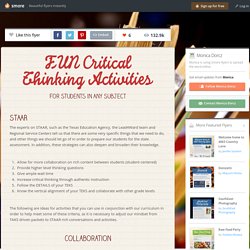
In addition, these strategies can also deepen and broaden their knowledge. Allow for more collaboration on rich content between students (student-centered)Provide higher level thinking questionsGive ample wait timeIncrease critical thinking through authentic instructionFollow the DETAILS of your TEKSKnow the vertical alignment of your TEKS and collaborate with other grade levels.
Improve Students' Self-Concept. A student enters school as a unique individual, molded by genes, environment, and a certain spark within himself.
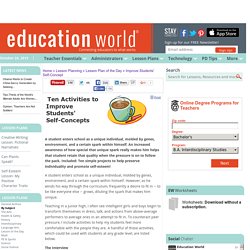
An increased awareness of how special that unique spark really makes him helps that student retain that quality when the pressure is on to follow the pack. Included: Ten simple projects to help preserve individuality and promote self-esteem! A student enters school as a unique individual, molded by genes, environment, and a certain spark within himself. However, as he winds his way through the curriculum, frequently a desire to fit in -- to be like everyone else -- grows, diluting the spark that makes him unique. Plagiarism. Logic Puzzles by Puzzle Baron. Plagiarism Scavenger Hunt. Examples: I would be plagiarizing if I were to write an essay about the walrus and said: The walrus' other characteristic features are equally useful.
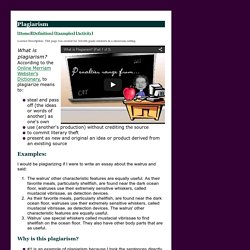
Reviving Reviews: Refreshing Ideas Students Can't Resist. Is review time a deadly bore for you and your students?
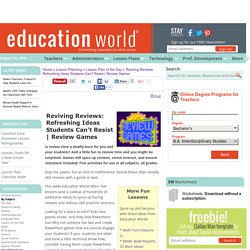
Add a little fun to review time and you might be surprised. Games will spice up reviews, revive interest, and ensure retention! Included: Five activities for use in all subjects, all grades. Stop the yawns. Answer the Question Frames. Welcome to Teaching That Makes Sense! What Is Plagiarism? Educational Leadership:Faces of Poverty:How Poverty Affects Classroom Engagement. Best Practices for At Risk Students. Resources for Idaho Teachers. PBIS Good and Bad Examples. What is 4MAT? Center for Research on Learning. Active Reading Strategies - Active Reading Strategies - McGraw Center - Princeton University. Some Basic Active Learning Strategies.
Engaging students in individual or small group activities–pairs or trios especially–is a low-risk strategy that ensures the participation of all.
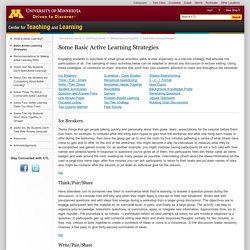
The sampling of basic activities below can be adapted to almost any discussion or lecture setting. Using these strategies, or variations on them, ensures that you'll hold your students' attention in class and throughout the semester. Ice Breakers. Center for Research on Learning.
Twelve Active Learning Strategies. 44 Prompts Merging Reflective Thinking With Bloom's Taxonomy. 7 Things To Remember About Educational Feedback Infographic. Teacher Infographics At the 7 Things To Remember About Educational Feedback Infographic you will find 7 Educational Feedback Tips that will help Teachers give and receive effective classroom feedback.
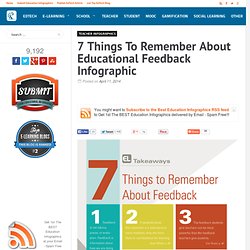
Feedback is not advice, praise or evaluation. Differentiation. Tchr Ed - Improving student learning outcomes. Questioning. Teacher Ideas, Teaching Resources, and Lessons for PreK-12 Teachers. A Listing of Instructional Strategies and Methods.
Teaching strategies. If you have dropped into this Course Design Tutorial from somewhere else, you might wish to start at the introduction, overview, or table of contents.
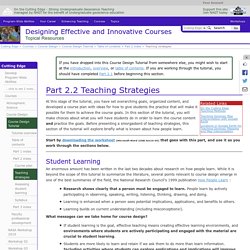
If you are working through the tutorial, you should have completed Part 2.1 before beginning this section. At this stage of the tutorial, you have set overarching goals, organized content, and developed a course plan with ideas for how to give students the practice that will make it possible for them to achieve the course goals. In this section of the tutorial, you will make choices about what you will have students do in order to learn the course content and practice the goals. Before presenting a smorgasbord of teaching strategies, this section of the tutorial will explore briefly what is known about how people learn.